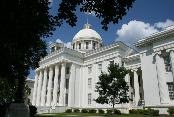My classes are currently starting the Civil War and some students have had a difficult time seeing two "different Americas" and understanding point of view. To help this and cover some of the many abolitionists, generals, and politicians of the day we just completed this project.
Students read about and analyzed various Civil War-era figures as either criminals or heroes based on how they are viewed by the North or South. The famous abolitionist John Brown for instance was said to possess a “transcendent moral greatness” by Henry David Thoreau. Senator Andrew Johnson of Tennessee, however, called him “nothing more than a murderer, a robber, a thief, and a traitor.” Many of my students like people from history to be simplified as either "good guys" or "bad guys", but it's important for students to understand why someone can be seen as both.
One one side of this worksheet, students create a commemorative plague to honor the great accomplishments of one of the assigned figures. They must name their award, come up with 3 reasons why he/she is being awarded, an appropriate date, and write down who is presenting the award. Here is one sample:
On the opposite side of their worksheet is a template for a wanted poster to capture him or her as a known criminal. This side must include a picture, last known location, reward, who the person is wanted by, and 3 crimes/reasons why they are wanted. Here are a completed versions on Robert E. Lee and Ulysses S. Grant:
On the students' list of possible choices, I included Jefferson Davis, Stonewall Jackson, J.E.B Stuart, Robert E. Lee, Robert Gould Shaw, William T. Sherman, Harriet Tubman, John Brown, Ulysses S. Grant. However, you could certainly add any number of Confederate or Union figures depending on your curriculum.
All of the resources needed for this project can be downloaded here: http://www.teacherspayteachers.com/Product/Civil-War-Wanted-Poster-Plaque.
Thanks & good luck!











